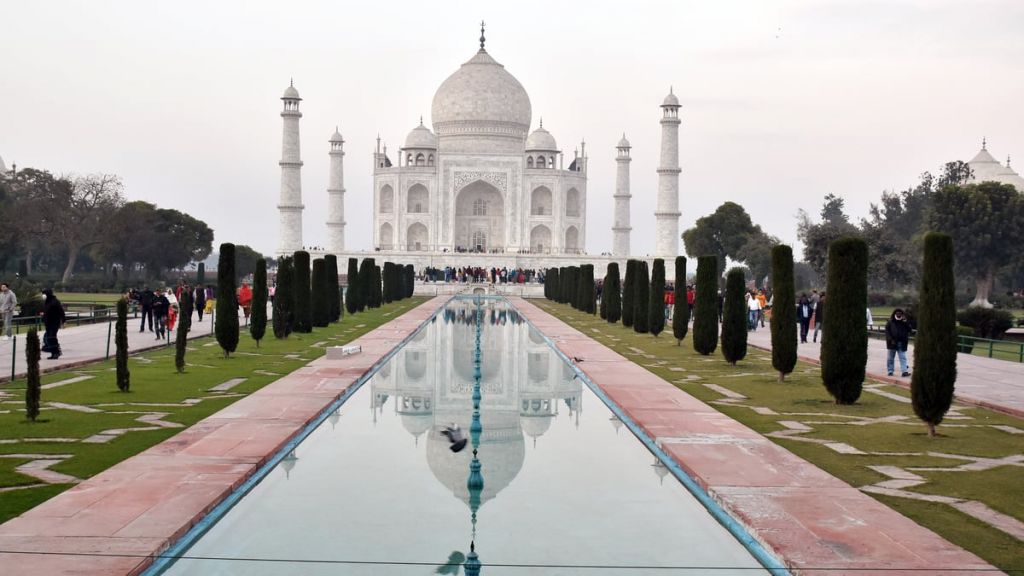
For the first time, the Archaeological Survey of India (ASI) has issued a clarification addressing concerns about the state of the Taj Mahal, amid growing speculation about conservation issues at the iconic monument.
In response to media reports and comments made by former Uttar Pradesh Chief Minister Akhilesh Yadav on social media, the ASI has provided point-by-point explanations regarding the preservation of the 17th-century Mughal masterpiece.
The ASI's Director General (DG) took to X (formerly Twitter) to debunk claims about the structural integrity of the Taj Mahal, particularly regarding reports of rusting on its main dome. The DG emphasized that the reports of rust are "incorrect" and assured that the monument remains structurally sound.
1. ताजमहल मुख्य गुंबद पर जंग लगने की सूचना गलत है।
— Archaeological Survey of India (@ASIGoI) September 20, 2024
2. लगातार अधिक वर्षा की वजह से पानी की कुछ बूँदें देखी गई हैं जिनका निराकरण किया जा रहा है. कोई गम्भीर संरचनात्मक समस्या नही है। (1/5) https://t.co/xk4636AjoU pic.twitter.com/hil4F7HK0l
However, he acknowledged that due to heavy rainfall in recent weeks, some drops of water had been observed inside the dome. “This issue is being resolved, and there is no serious structural problem,” the ASI noted in its statement.
Addressing concerns about vegetation, particularly a plant seen growing on the northern side of the Taj’s dome, the ASI clarified that the plant was found on an outer wall, not on the dome itself. “Such growth is common during the rainy season,” he said, and assured the public that a continuous process of maintenance and removal of unwanted vegetation is in place to protect the monument.
In a separate concern raised by tourists and operators, the issue of waterlogging in the gardens surrounding the Taj Mahal was also addressed. The ASI explained that rainwater temporarily accumulates in certain areas of the garden complex, but the water is absorbed into the groundwater system through wells and recharge pits, part of a long-standing water conservation method.
“This is not a problem, but rather a system to ensure that rainwater is used sustainably,” the DG said in a statement and urged tourists to visit the iconic structure.
The clarification from the ASI comes in response to comments made by former Chief Minister Akhilesh Yadav, who criticized the Bharatiya Janata Party (BJP)-led Uttar Pradesh government for allegedly failing to maintain the Taj Mahal. In his post on X, Yadav listed several issues, including waterlogging, plant growth on the monument, and leakage, accusing the government of neglecting its duty to preserve India’s cultural heritage. He further claimed that the failure to address these problems was tarnishing India's global image.
विश्व भर के पर्यटकों को आकर्षित करनेवाले अजूबे ‘ताजमहल‘ के रख-रखाव को लेकर भाजपा सरकार व उसके सुषुप्त निष्क्रिय विभाग पूरी तरह से नाकाम हैं:
— Akhilesh Yadav (@yadavakhilesh) September 19, 2024
- मुख्य गुंबद पर लगे कलश की धातु में ज़ंग लगने की आशंका है,
- मुख्य गुंबद से पानी टपक रहा है,
- गुंबद में पेड़ उग आने का समाचार… pic.twitter.com/anXVK9ifH3
Yadav’s remarks were made in light of viral videos showing water leakage from the Taj’s main dome and plants sprouting between its marble stones. Several tour operators had also expressed concern, questioning whether enough was being done to protect the UNESCO World Heritage Site, which attracts millions of visitors every year.
In response, the ASI assured the public that every penny spent on the maintenance of the Taj Mahal is subject to audits, and so far, no discrepancies or concerns have been raised in any audits.
The DG's message was clear: the Taj Mahal is being well-preserved, and efforts are ongoing to ensure that it continues to stand as a symbol of India's rich cultural and historical legacy.